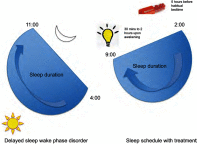Impact of traumatic brain injury on sleep: an overview
- PMID: 31692507
- PMCID: PMC6707934
- DOI: 10.2147/NSS.S182158
Impact of traumatic brain injury on sleep: an overview
Abstract
Traumatic brain injury (TBI) is a global health problem that affects millions of civilians, athletes, and military personnel yearly. Sleeping disorders are one of the underrecognized sequalae even though they affect 46% of individuals with TBI. After a mild TBI, 29% of patients have insomnia, 25% have sleep apnea, 28% have hypersomnia, and 4% have narcolepsy. The type of sleep disturbance may also vary according to the number of TBIs sustained. Diffuse axonal injury within the sleep regulation system, disruption of hormones involved in sleep, and insults to the hypothalamus, brain stem, and reticular activating system are some of the proposed theories for the pathophysiology of sleep disorders after TBI. Genetic and anatomical factors also come to play in the development and severity of these sleeping disorders. Untreated sleep disturbances following TBI can lead to serious consequences with respect to an individual's cognitive functioning. Initial management focuses on conservative measures with progression to more aggressive options if necessary. Future research should attempt to establish the effectiveness of the treatments currently used, as well as identify manageable co-existing factors that could be exacerbating sleep disorders.
Keywords: TBI; neurobiology; sleep; sleep disorders; traumatic brain injury.
© 2019 Aoun et al.
Conflict of interest statement
The authors report no conflicts of interest in this work.
Figures
References
-
- Katz DI, Cohen SI, Alexander MP. Mild traumatic brain injury. Handb Clin Neurol. 2015;127:131–156. - PubMed
-
- Frieden TR, Houry D, Baldwin G. Traumatic brain injury in the United States: epidemiology and rehabilitation. CDC NIH Rep to Congr. 2015;1–74.
LinkOut - more resources
Full Text Sources




